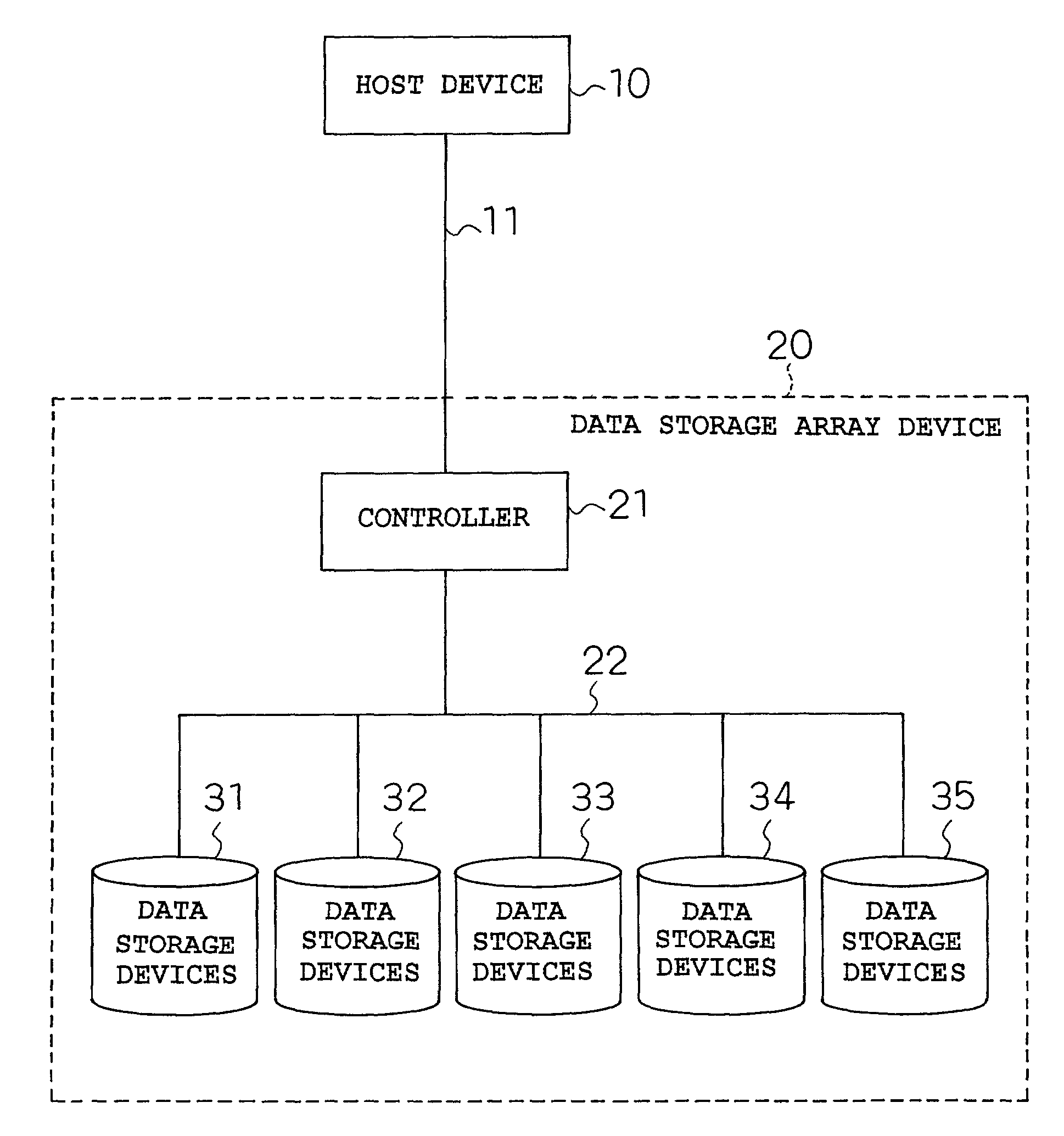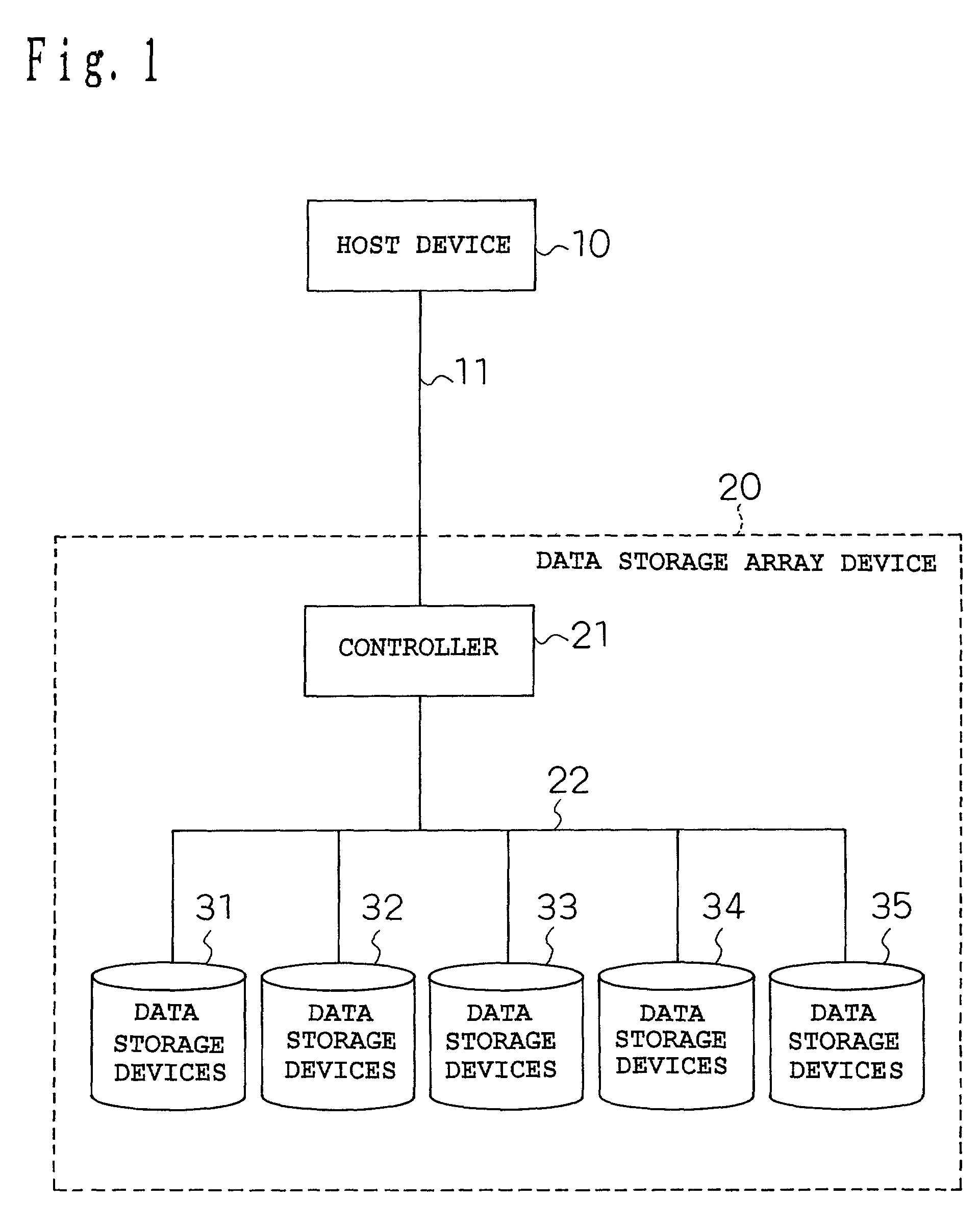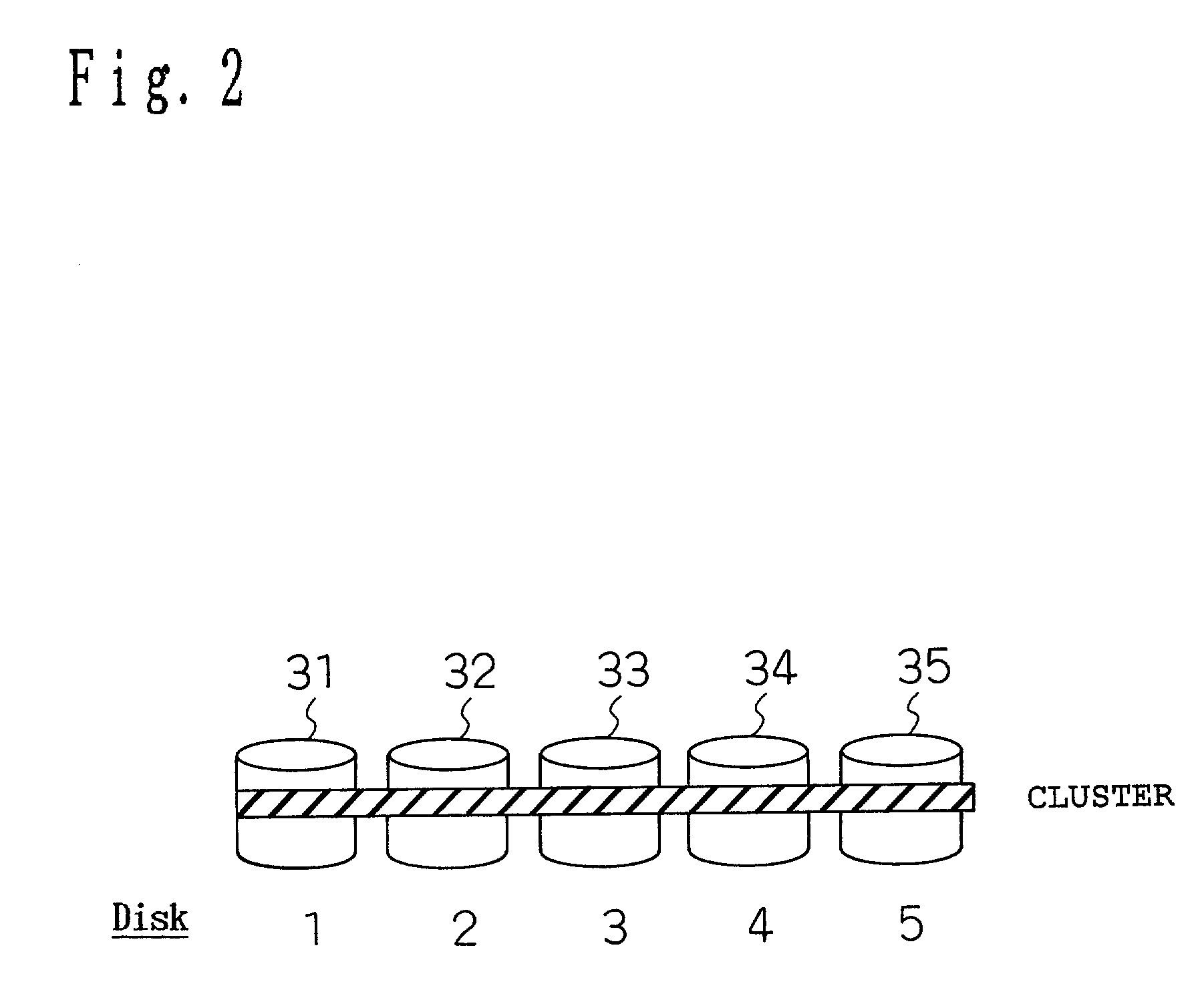Data storage array device and data access method
a data storage array and data access technology, applied in the direction of generating/distributing signals, instruments, television systems, etc., can solve the problems of significant delay in access requests, limited delay after the disks begin to respond, and inability to access continuous media data uninterruptedly
- Summary
- Abstract
- Description
- Claims
- Application Information
AI Technical Summary
Problems solved by technology
Method used
Image
Examples
embodiment 1
[0058] Embodiment 1
[0059] Now, the operation of the data storage array device will be described according to FIGS. 3 to 6.
[0060] FIG. 3 is a time chart from the point when the host device 10 requests accesses to the point when responses are completed, in which the number of commands to be queued is three. In this figure, the access requests from the host device 10 are identified with the symbol A, B, and C. FIG. 5 shows steps from the receipt of the access requests to the issue of instructions to the Disks 1 to 5. It is checked that the number of the requests from the host does not exceed the upper limit of queuing (three in this case), and if it does not, the requests are accepted and the instructions to access Disk 1 to 5 are generated. In the case of writing, redundant data is generated and a plurality of instructions to write data and redundant data are generated. In the case of reading out, a plurality of instructions to read out data from the Disks 1 to 5 constituting a cluste...
embodiment 2
[0072] Embodiment 2
[0073] Now, an exemplary operation for isolating the start of response detection for each instruction group from each other will be described by using FIG. 7. In FIG. 7, the timings to start response detection (to start the timer) vary. For each instruction group, the response detection for the instruction group is started (the timer is started) at the time when one of the instructions belonging to the instruction group first begins to be executed in one of the Disks 1 to 5. In this case, the response detection is executed independently for each instruction group, and the timer is also counted separately for each instruction group. For the instruction group B, one of the instructions first begins to be executed in the Disk 2, therefore the response detection is started at the point. The details of the response detection are the same (FIG. 6). This operation has the same advantages as those of the operation of FIG. 3, but it also realizes earlier responses in appli...
PUM
 Login to View More
Login to View More Abstract
Description
Claims
Application Information
 Login to View More
Login to View More - R&D
- Intellectual Property
- Life Sciences
- Materials
- Tech Scout
- Unparalleled Data Quality
- Higher Quality Content
- 60% Fewer Hallucinations
Browse by: Latest US Patents, China's latest patents, Technical Efficacy Thesaurus, Application Domain, Technology Topic, Popular Technical Reports.
© 2025 PatSnap. All rights reserved.Legal|Privacy policy|Modern Slavery Act Transparency Statement|Sitemap|About US| Contact US: help@patsnap.com



